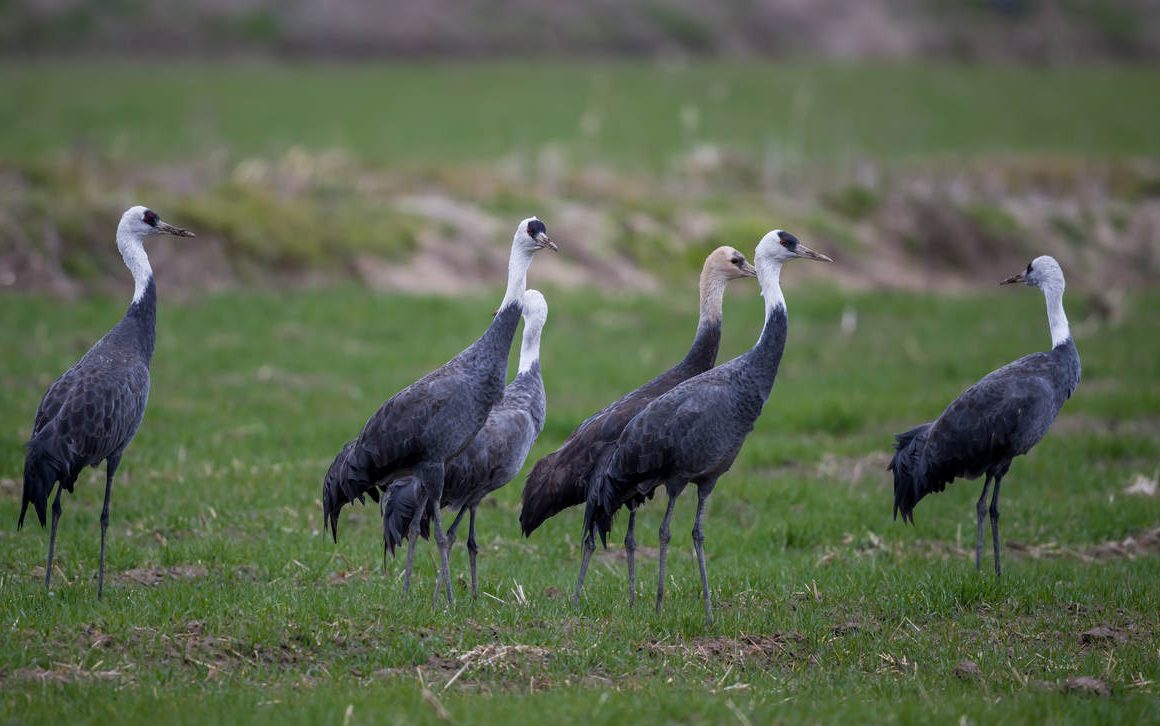
February 2023 was a slow month for birding in Shanghai, at least for me – so slow that I almost put the Spotted Dove, possibly my least favorite bird here, on the cover. But then, sanity (or maybe respect for you, the reader) prevailed.
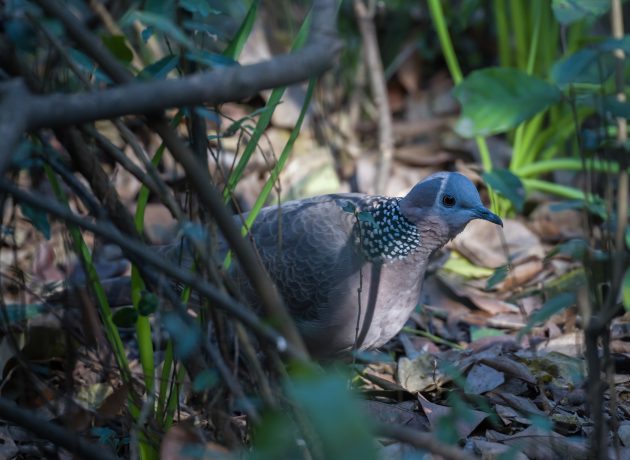
Not a cover species
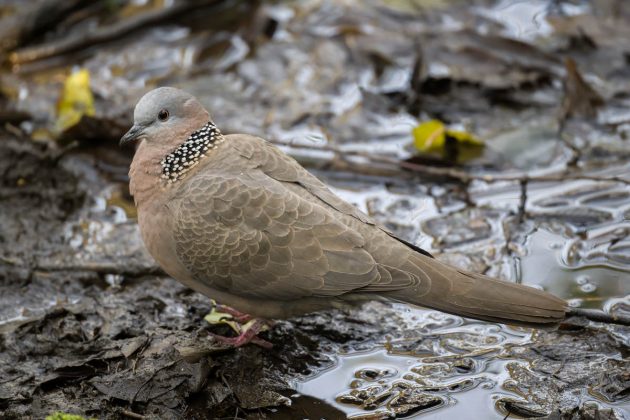
The Black Kite is not actually black, but of course, misleading bird names are not exactly rare. The best eBird can offer in terms of plumage color is “dark”, and even that seems a bit of an exaggeration.
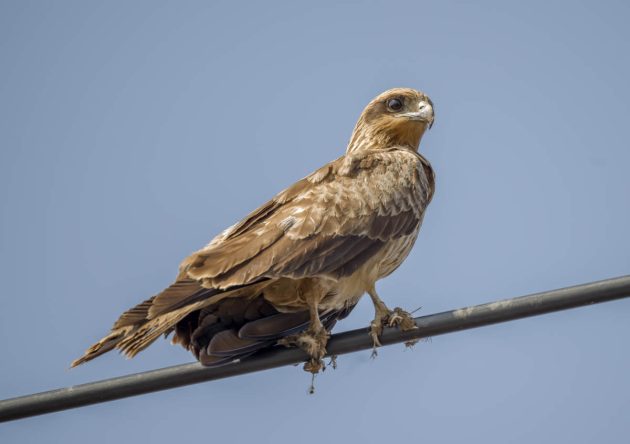
By the way, if you google “Black Kite”, the very first result you get even before the Wikipedia entry on the bird is a company named Black Kite. By their own declaration, “Black Kite is disrupting third-party risk management practices by providing security experts with the industry’s most accurate and comprehensive cyber intelligence, resulting in unparalleled visibility into the risk vendors introduce into their environments” – whatever that means. Also, the company “pushes the limits on predictive insights, delivering the highest quality intelligence to help organizations make better risk decisions and improve the health and safety of the entire planet’s cyber ecosystem.”
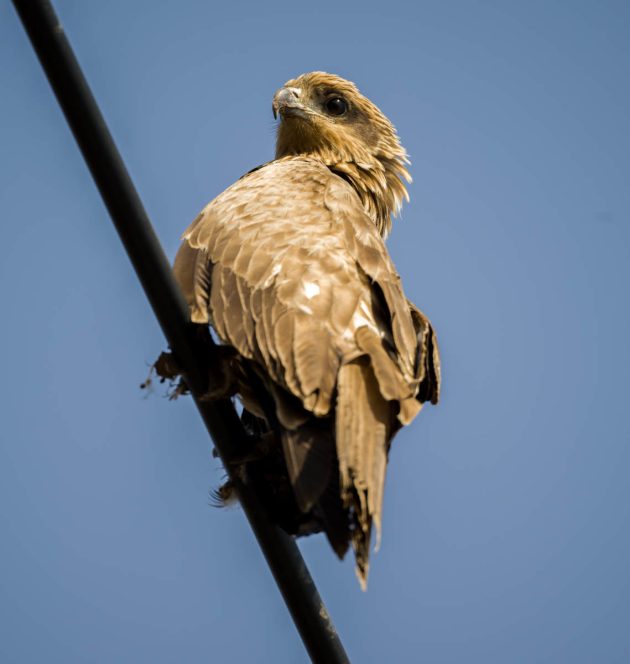
Back to non-cyber ecosystems such as the ones containing the Black Kite (bird). Maybe those should be protected too? Actually, the Black Kite is supposedly the most common of all raptors with a population of about 6 million, but some populations are declining.
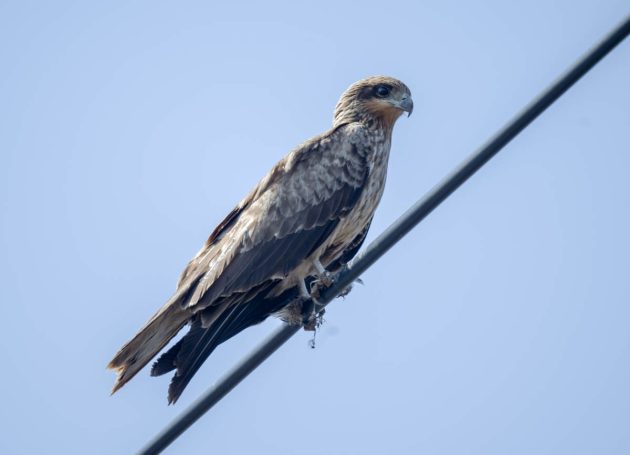
Given that the Black Kite is politely described as an “opportunistic hunter” – which includes the fact that they are more likely to scavenge than most other raptors – the name choice of the company protecting the world’s cyber ecosystem is a bit weird. Or maybe not – aren’t vultures sometimes praised for removing pathogens and toxins in the environment by consuming carrion?
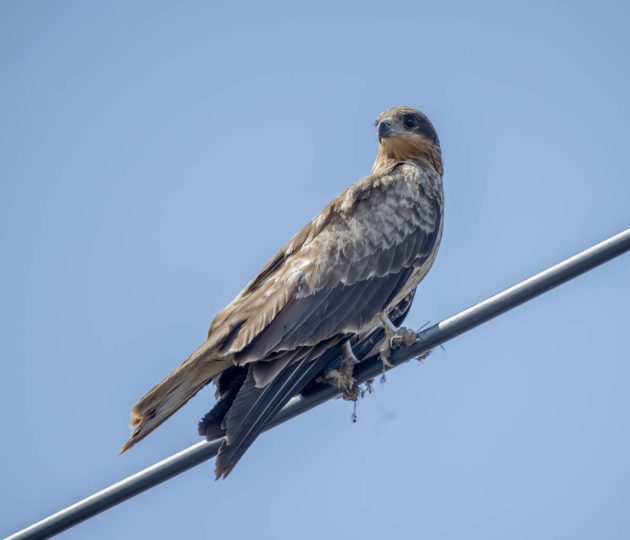
Wikipedia points out that the Black-winged Kite has some similarities with owls, in particular, the “owl-like forward-facing eyes with red irises”. On Chongming Island, some of them seem to be relatively unafraid of people, at least by the standards of raptors.
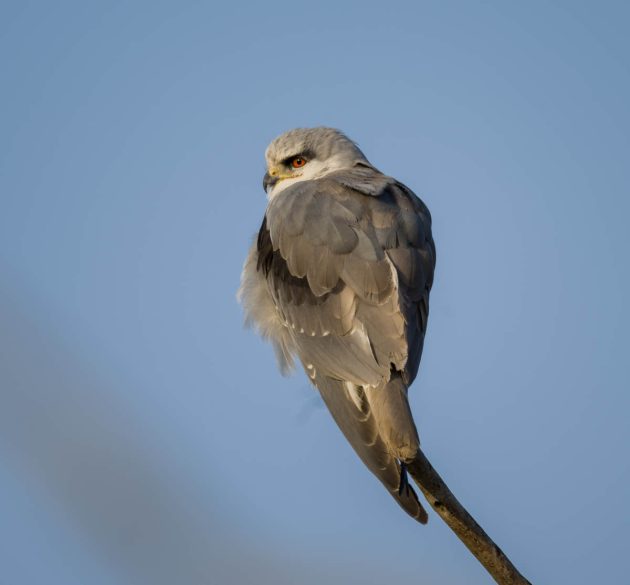
I am not sure about the security situation in Iraq these days but at least some people do ornithological research there – resulting in papers such as one titled “Breeding observations of the Black-winged Kite Elanus caeruleus (Desfontaines, 1789) in Iraq”. Impressive.
While the one-chick policy for Chinese Hooded Cranes has recently been lifted as the government is worried about an aging crane population, most crane couples still restrict themselves to a single chick. It is mostly a question of economics – raising just one is troublesome enough given the resources required to feed and educate the chick.
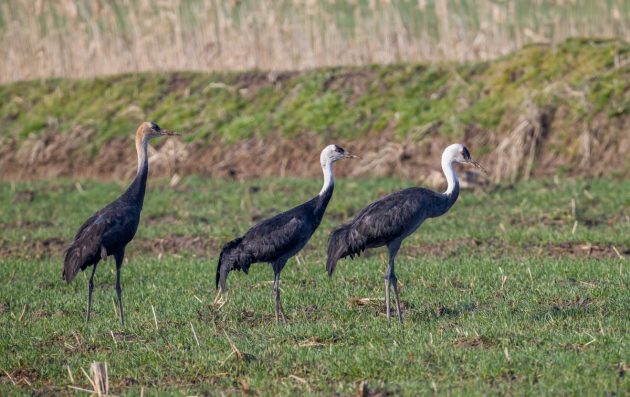
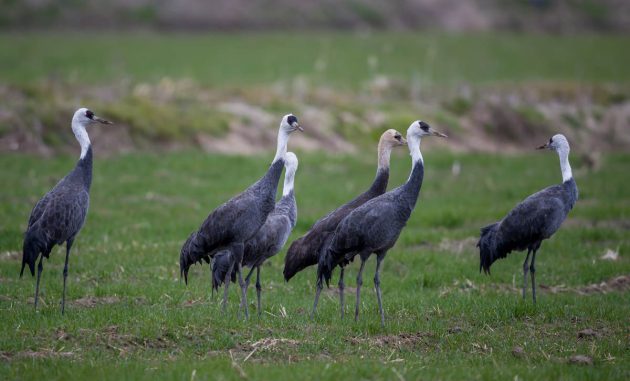
Chongming Dongtan, where these photos were taken, is the wintering location of about 100 Hooded Cranes – about 1% of the global population. No surprise then that the species is listed as Vulnerable.
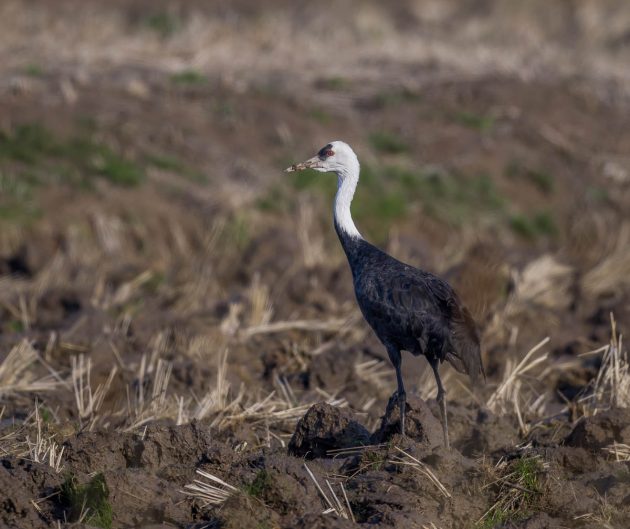
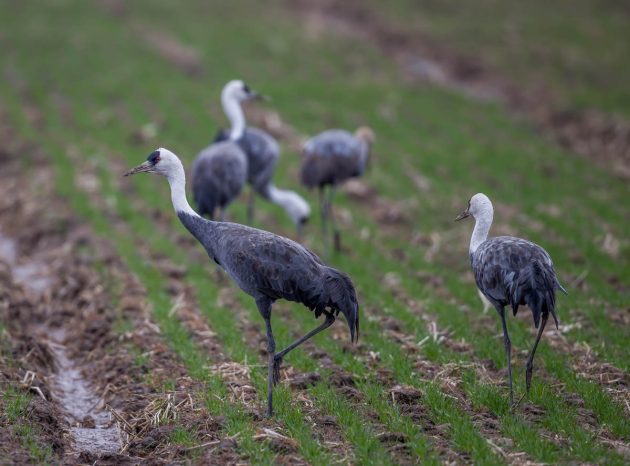
In Thailand, apparently, the number of Oriental Magpie-Robins has seriously declined in some areas apparently, partly because of poaching for the pet bird trade as the birds are good singers (source).
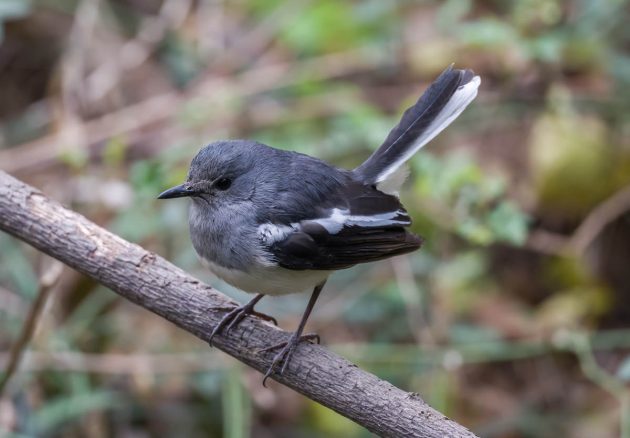
Fortunately, they are quite common in Shanghai.
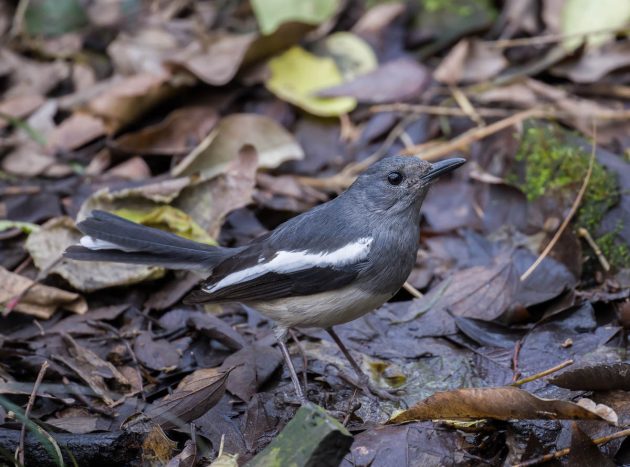
The Latin species name of the Common Greenshank, nebularia, sounds a bit like a science fiction novel to me – however, it means “misty” and apparently is derived from the birds’ misty, marshy habitat (HBW).
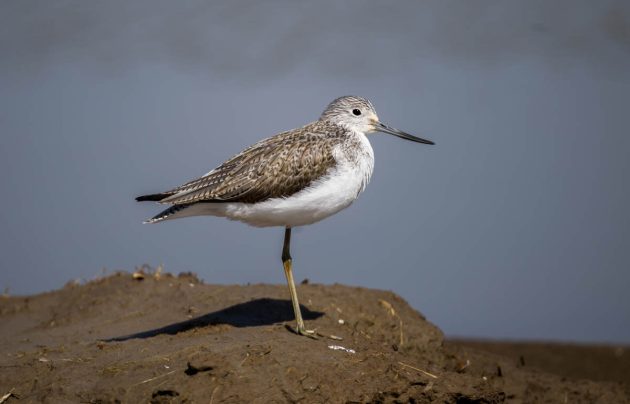
The White-rumped Munias of Shanghai do not look particularly white-rumped – either they need to shower more frequently, or (more likely) they are of a different subspecies, swinhoei, than the indeed nicely White-rumped Munias shown on the HBW page of the species. Actually, the HBW remarks that “Form swinhoei appears distinctive; further research, including vocal and genetic analyses, desirable”, so maybe this will turn out to be a separate species eventually.
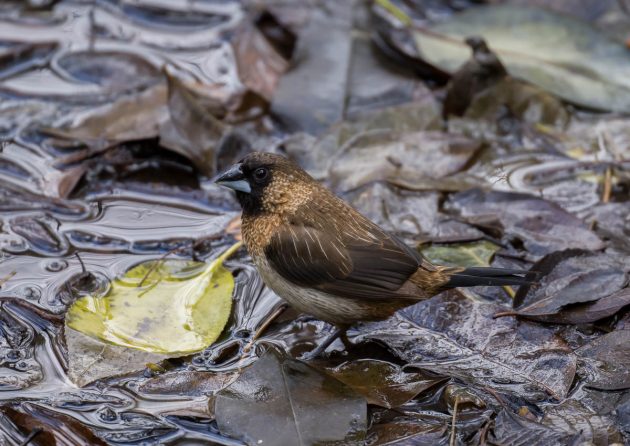
One interesting bit of information on these munias is that birds that inhabit areas with more mixed flocks sing simpler songs (source). The authors think that this may be because in mixed flocks simplification is necessary to avoid confusion with other species (to be honest, in the original paper the phrasing of the last sentence is the rather more scientific-sounding “The song complexity might be constrained to intensify distinct conspecific signals from related species”).
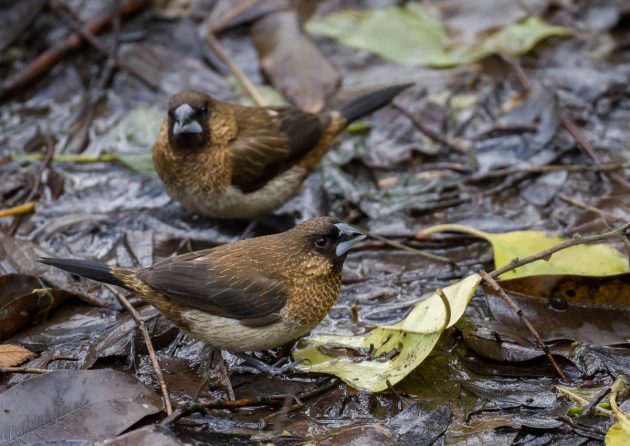
While mainly an Asian bird, the Red-flanked Bluetail has recently been seen in parts of Europe (particularly Finland and Scotland) more frequently, indicating a possible range extension (source).
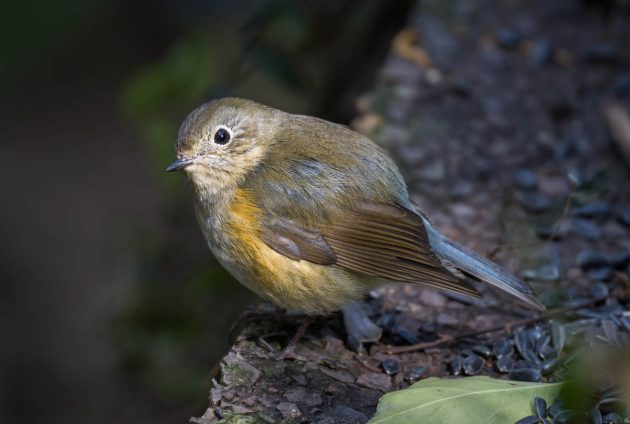
Strangely, the HBW distribution map of this species indicates that Shanghai should be outside of the species’ wintering range – in fact, it is a rather common species here in winter.
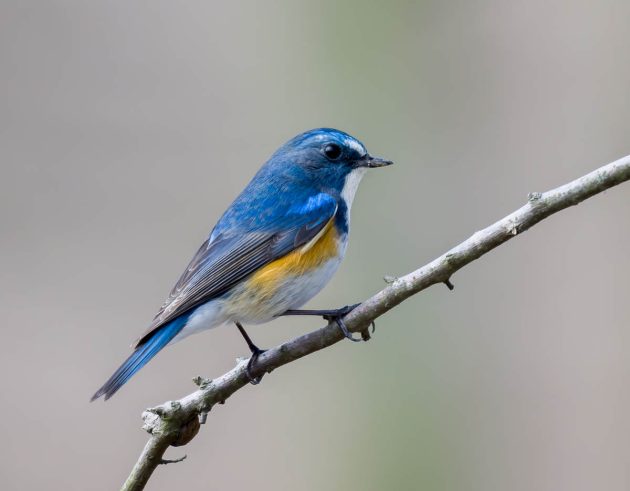
I guess I rarely take photos of the Light-vented Bulbul as it is so common here in Shanghai and elsewhere. It is also called Chinese Bulbul.
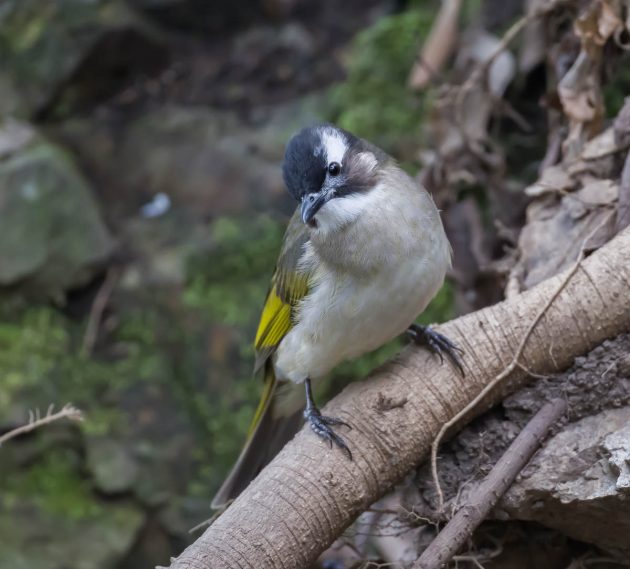
In somewhat dubious English, the abstract of one paper on this species by Chinese authors states that “Pycnonotus sinens has got used to the city life and become a kind of city bird that are closely associated with human” (of course, my Chinese – spoken only anyway – is far worse than this English).
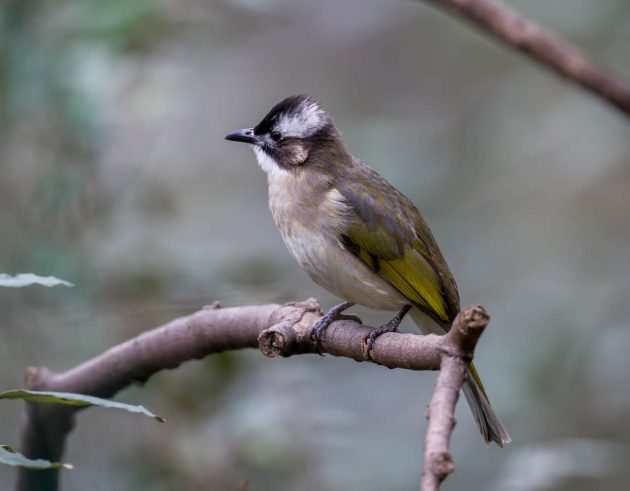
I wonder if male eBird employees ever call their girlfriends “modestly attractive”? If yes, then said girlfriends can easily imagine how the Yellow-browed Bunting feels by being described as a “small, modestly attractive bunting”.
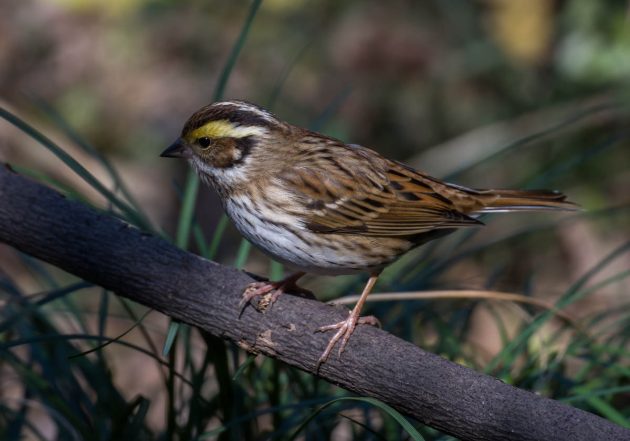
Presumably, the bunting is a bit better in keeping its calm upon hearing this statement than the girlfriend concerned.
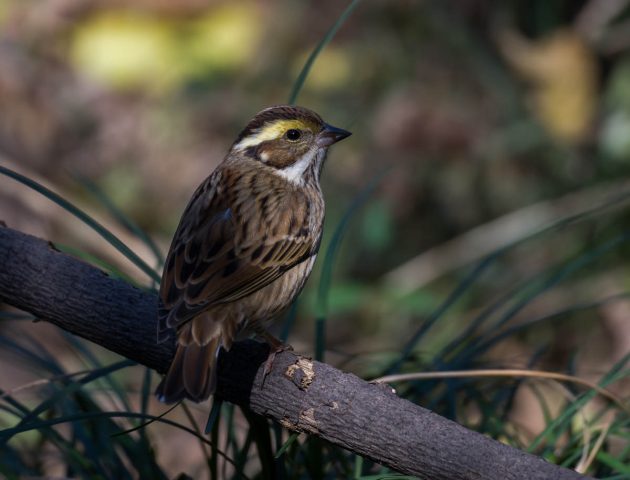
The Tristram’s Buntings at Tianmashan often make offensive jokes about their “modestly attractive” relatives. Birds can be so cruel to each other.
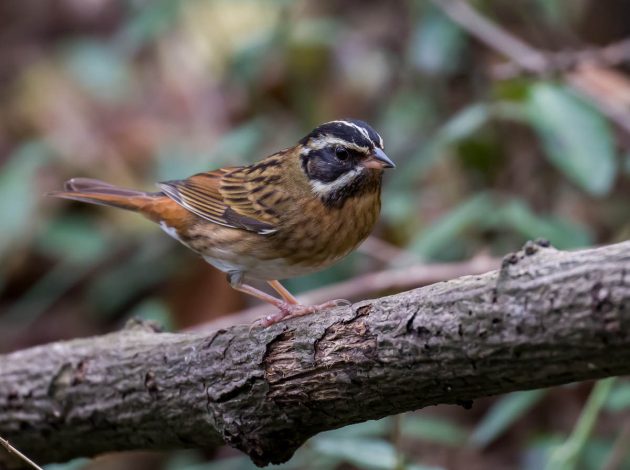
Tristram’s Buntings also make fun of Yellow-throated Buntings, constantly reminding them that they are no longer called Elegant Buntings.
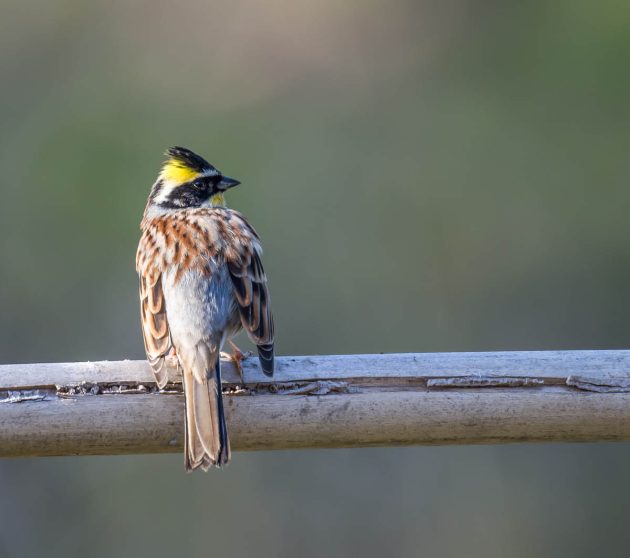
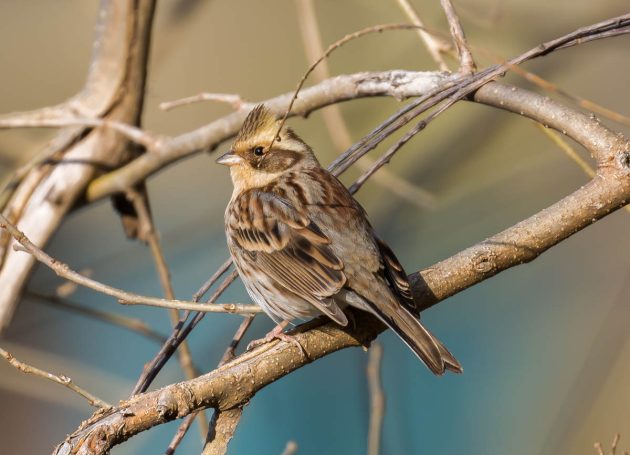
As a result of this degradation, some of these poor birds now earn money directing traffic.
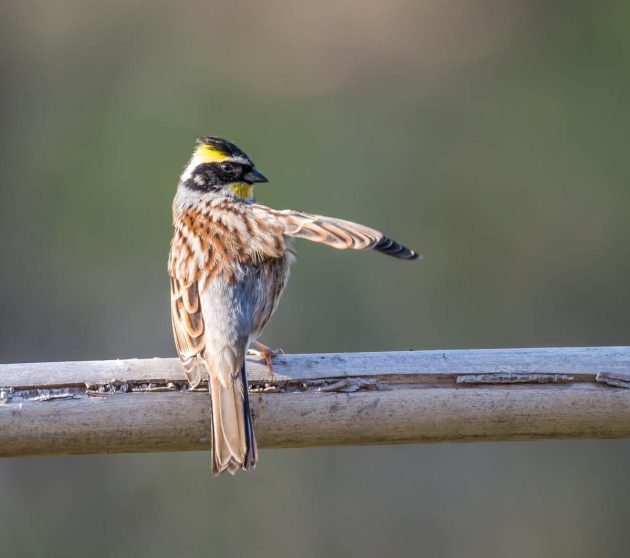
According to Wikipedia, White-eyes such as Swinhoe’s White-eye are “mostly of undistinguished appearance”. Hm. A bit unfair, I think.
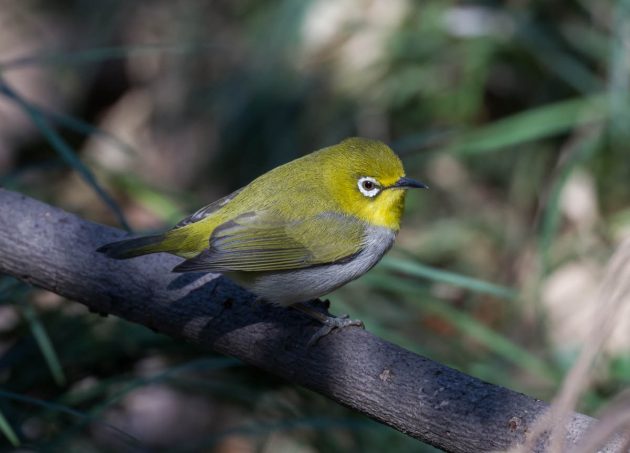
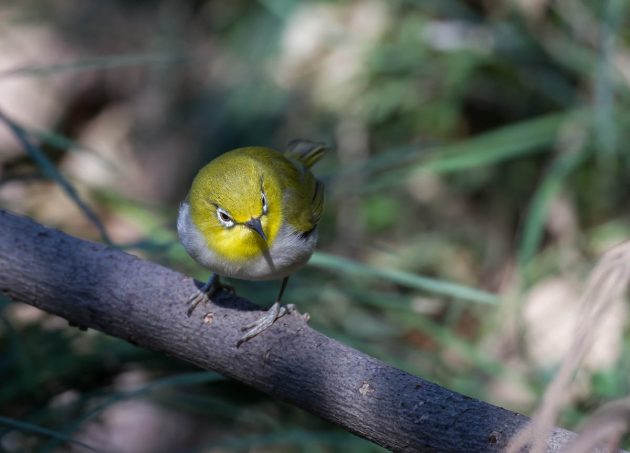
According to Kenn Kaufman, the grosbeak name part of the Chinese Grosbeak comes from the French Gros for “thick” and Bec for “beak”. Of course, he is talking about an American species, the Evening Grosbeak, but I assume the etymology is the same.
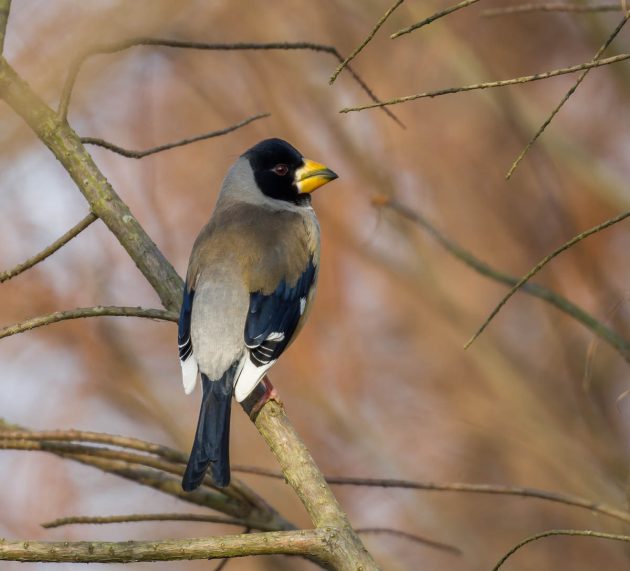
Thinking about what to write about the Pale Thrush, it occurred to me that I had no idea how the expression “beyond the pale” originated (and no worries, I will not later write that this thrush is “beyond the pale” – my jokes tend to be bad, but not that bad).
It is kind of interesting, actually, and about the Norman invasion of Ireland. As this source explains, “Within the Pale ditch [a ten-foot-deep ditch surrounded by eight-foot banks on each side and ringed by a thorny hedge, fortifying the boundaries of English settlements], settlers lived under the protection of the crown. But once you passed ‘the Pale,” you were outside the authority and safety of English law, and subject to all the savageries of rural Ireland. ‘Beyond the pale’ then became a colloquial phrase meaning ‘outside the limits of acceptable behavior or judgment.’ “
This has absolutely nothing to do with the Pale Thrush, of course. Thanks for pointing this out though.
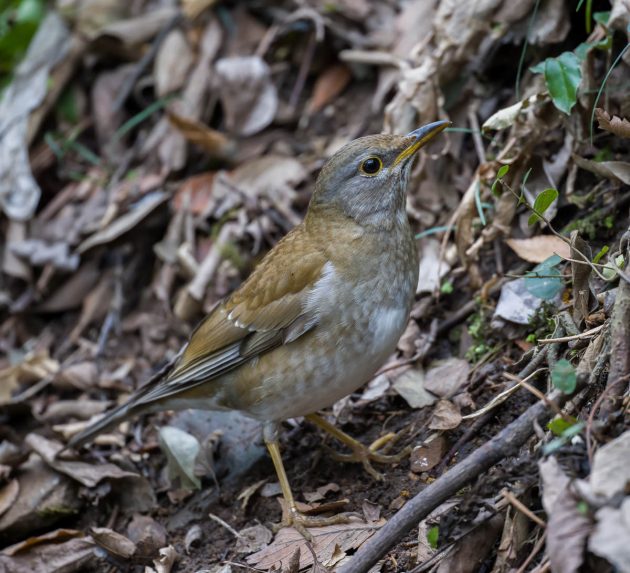
Eurasian Siskins can die from ingesting large road salt grains that the birds apparently mistake for potential gizzard stones (source). Fortunately, given the climate, this is not very likely in Shanghai.
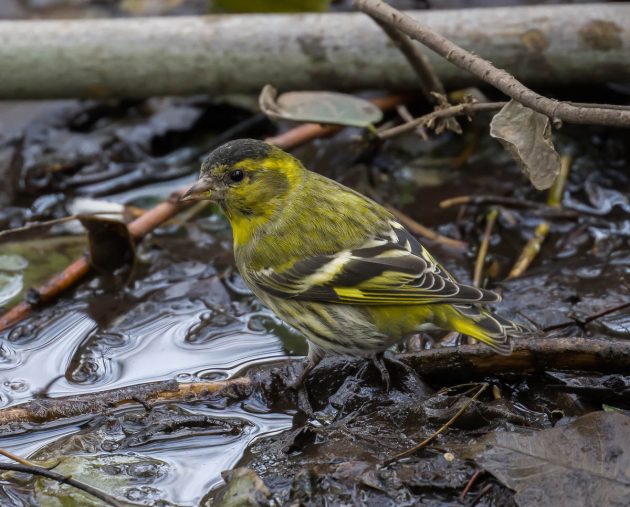
These Eurasian Spoonbills on Chongming Island most likely spend their summer in Heilongjiang, if a recent paper is correct: “Tracking data showed no geographical overlap during the annual cycle in Eurasian Spoonbills marked in the two main summering areas. Birds marked in the Naoli River Basin in Heilongjiang Province, China, wintered along the Jiangsu coastline in China, while Eurasian Spoonbills from two discrete summering areas (in Inner and western Mongolia) overwintered inland in the Yangtze River floodplain of China.”
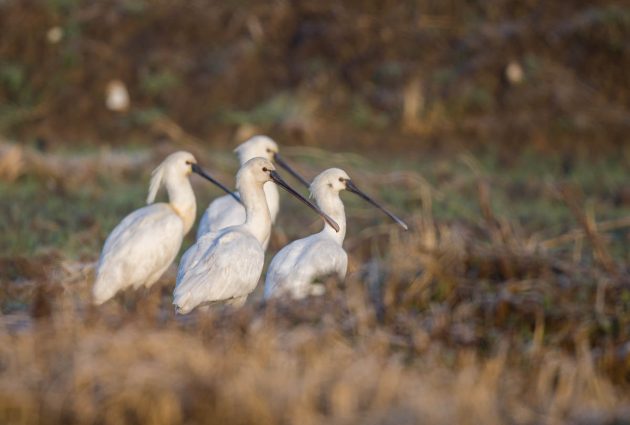
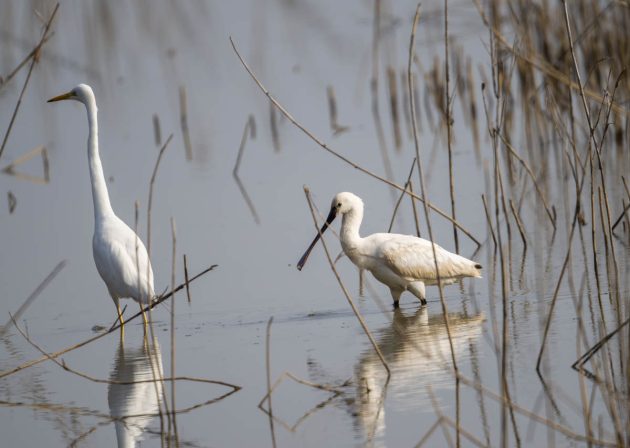
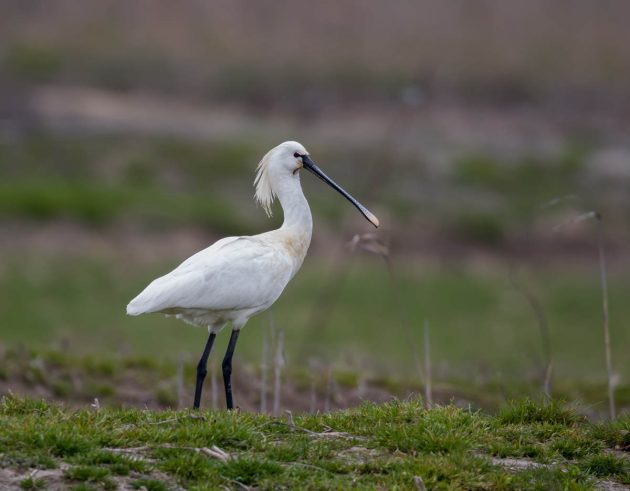
At Tianmashan, one can almost always hear Grey-capped Greenfinches. While to me they sound like a cheap cat toy with a dying battery, the HBW (being more scientifically oriented and also presumably less feline-oriented) talks of “a distinctive twittering ‘dzi-dzi-i-dzi-i’ flight note with ringing or metallic quality”.
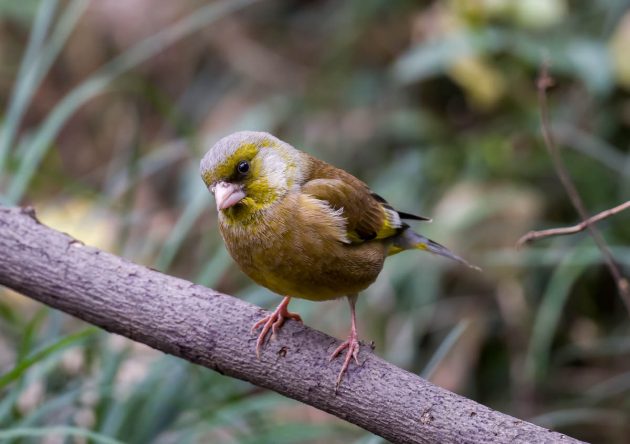
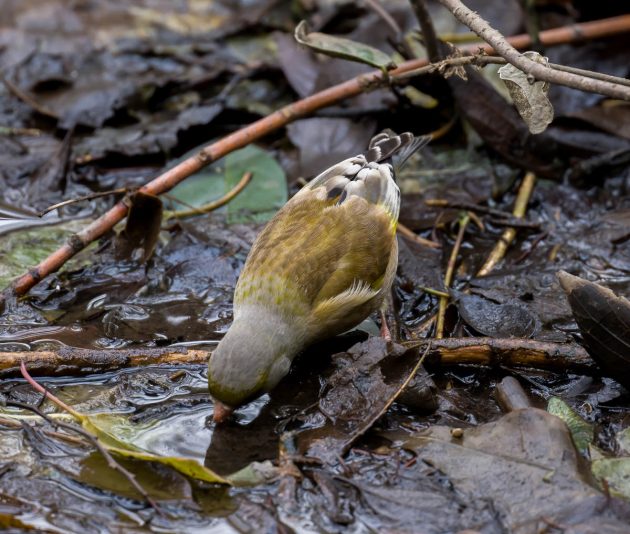
Writing a blog post is always a bit of a balancing act – you want to be as clear as possible but also avoid offending sensitive groups of people such as the nice US folks opposing drag shows. In that spirit, I will not give you the English name of the species below but just its Latin name, Parus minor.
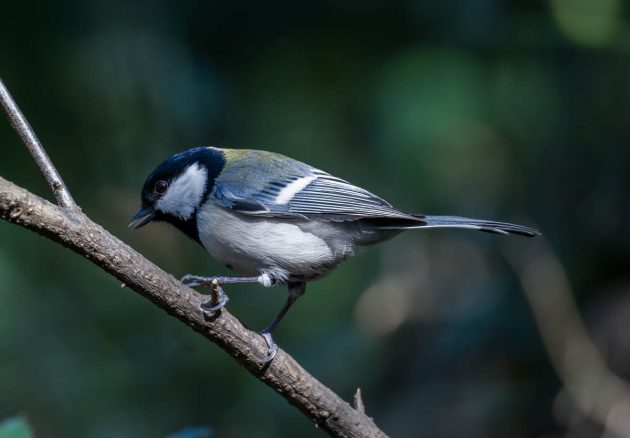
Some examples of animal names working the other way around – with the Latin name sounding naughty – can be found here.
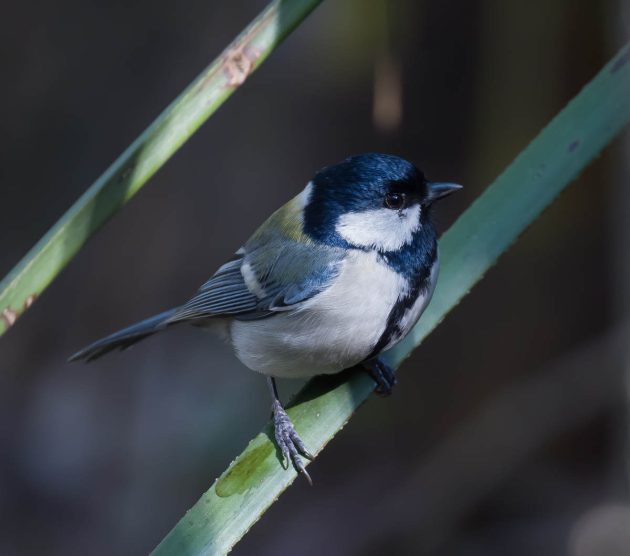
A relative of this species is the Yellow-bellied Tit.
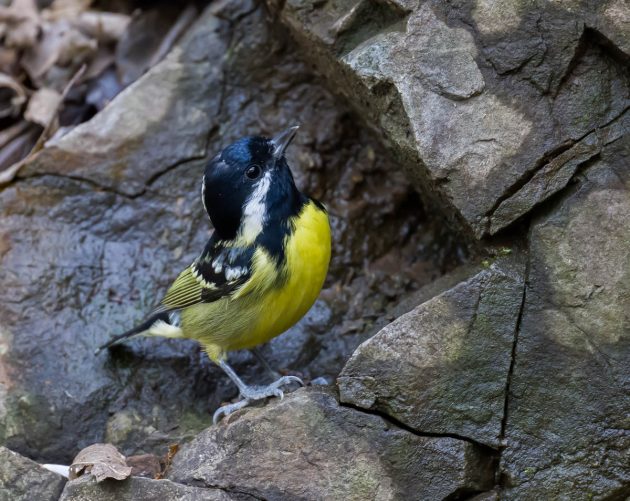
Its Latin species name venustulus means “charming, lovely” – and who could oppose that?
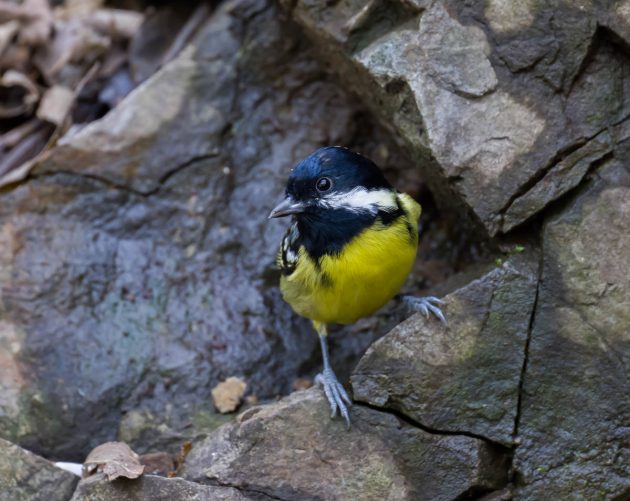
This is a male, as recognizable by the black throat, black forehead and black crown and (presumably) black thoughts.
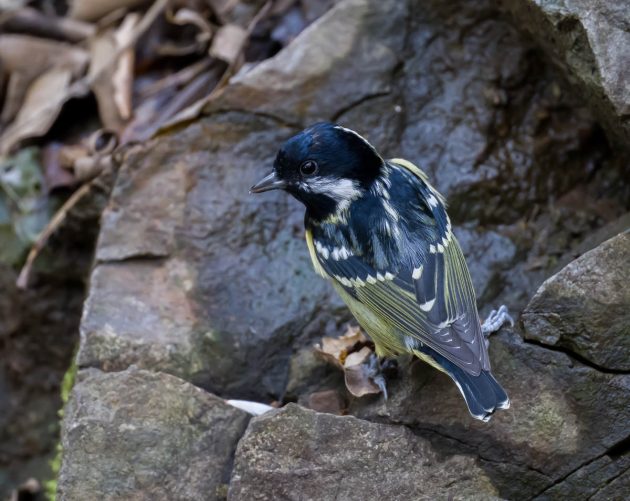
In contrast to me, whose fashion sense is restricted to just liking everything black, relatives of these tits seem to follow fashion – they incorporate wool strings of a specific color into their nests depending on what other, presumably older birds have done before (original source, popular science version). This research was actually done only about 10 km away from a place I once lived for a couple of years, in Radolfszell, Germany.
If you want to signal to your environment that you
a. Like this bird family
b. Like bad jokes
and
c. Are a bit sexist,
you might want to consider getting a T-Shirt that combines all these three messages. I am thinking of getting one for Bella, my regular bird guide from Alpinebirding, but am a bit afraid she will only find Little Egrets for me on my next trip …
The Common Snipe shares part of its name with one of the all-time great songs of all time, “Common People” by Pulp. In which an ordinary guy shows a rich girl around in the world common people live in:
“I took her to a supermarket
I don’t know why but I had to start it somewhere
So it started there
I said ‘pretend you got no money’
And she just laughed and said ‘oh, you’re so funny’
I said ‘yeah…
Well, I can’t see anyone else smiling in here'”
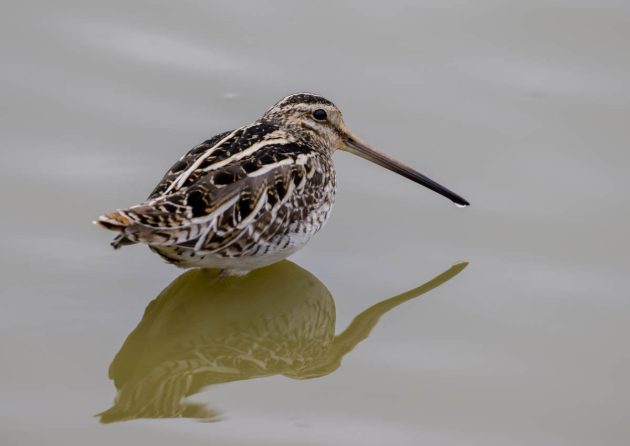
Maybe a conversation between a Common Snipe and one of the rarer ones occasionally seen in Shanghai, such as Pin-tailed or Swinhoe’s Snipe, would sound somewhat similar …
While the green background makes it look like this photo was staged in a photo studio, the blue plastic bit indicates that this Northern Lapwing photo was taken in China’s outdoors.
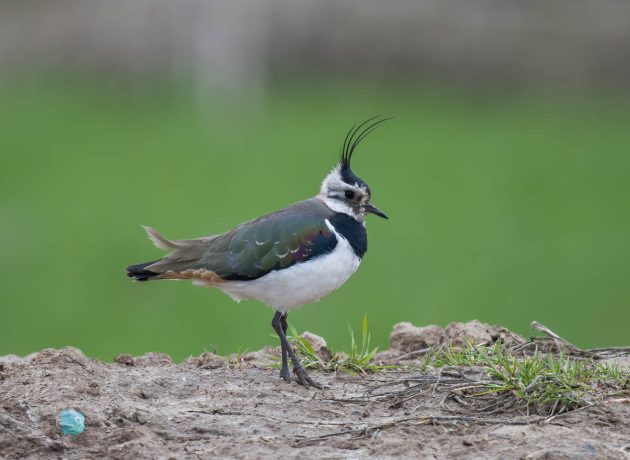
On Halloween, some Eurasian Hoopoes dress up as Ring-necked Parakeets to shock their mates. Their reaction is justified – in Israel, where Ring-necked Parakeets are an invasive species, they have a significant negative effect on the breeding density of hoopoes (source).
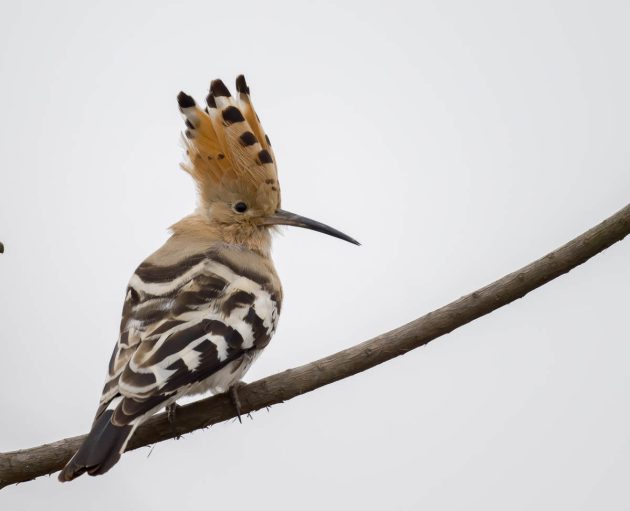
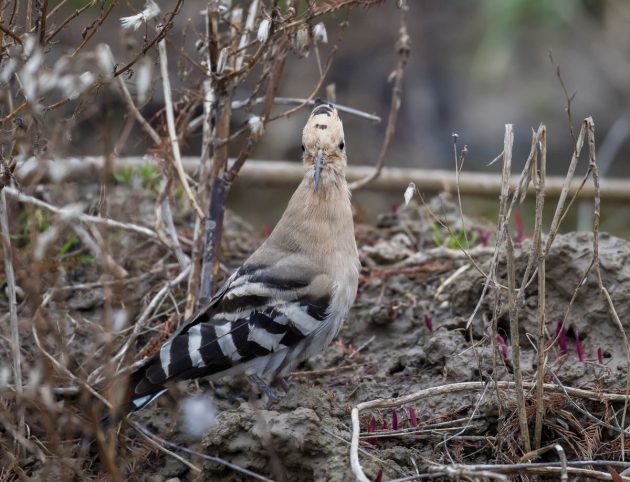
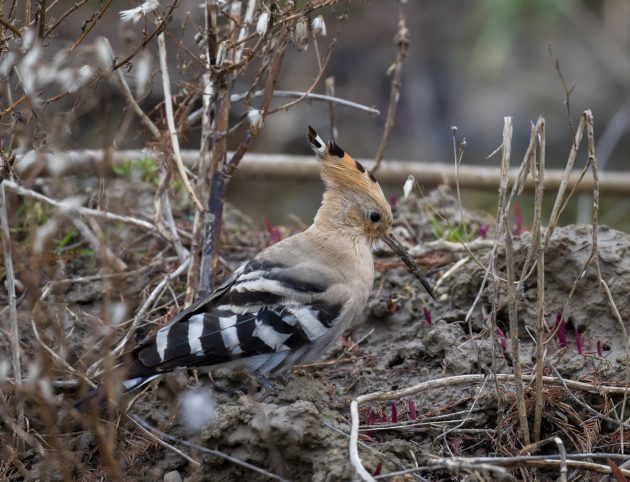
According to a duck-focused website, “In the world of ducks, the Northern Pintail takes the prize for elegance”.
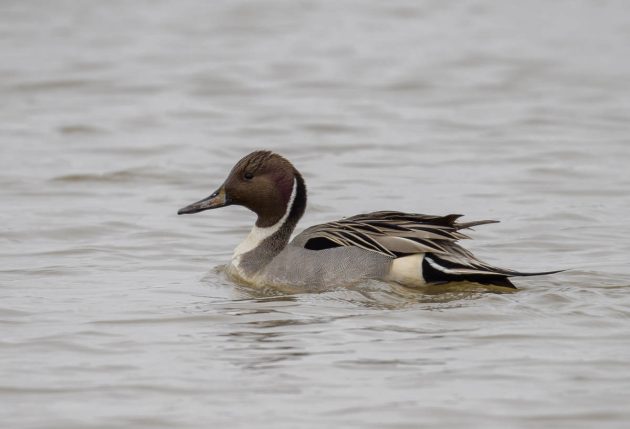
In the HBW, the section “Priorities for future research” alone has 576 words, which is longer than the complete entry for some species not occurring in North America (for example, the entry for the Brown Parrotbill has a total of 530 words) – which seems to prove my suspicion that the need for further research increases with the amount of research already done.
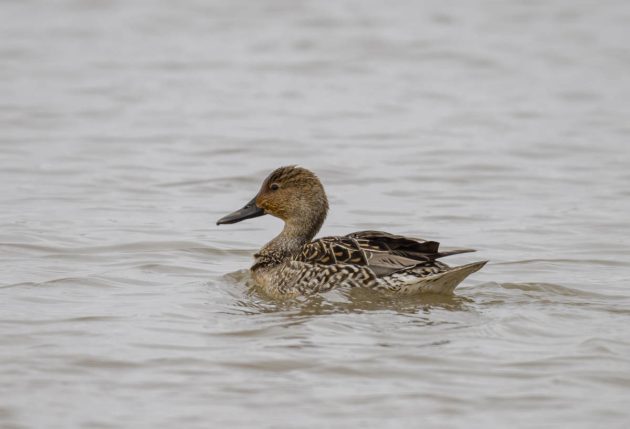
A regular feature in my posts is the section “bird photos taken in color that look like they were taken in black and white”. Today, the species featured are Pied Kingfisher …
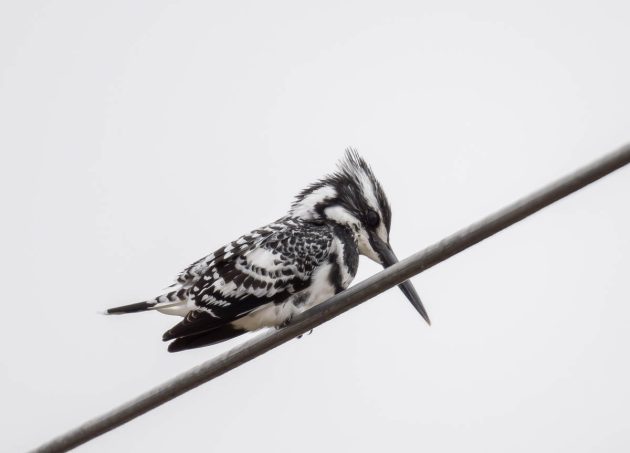
… and Pied Avocet.
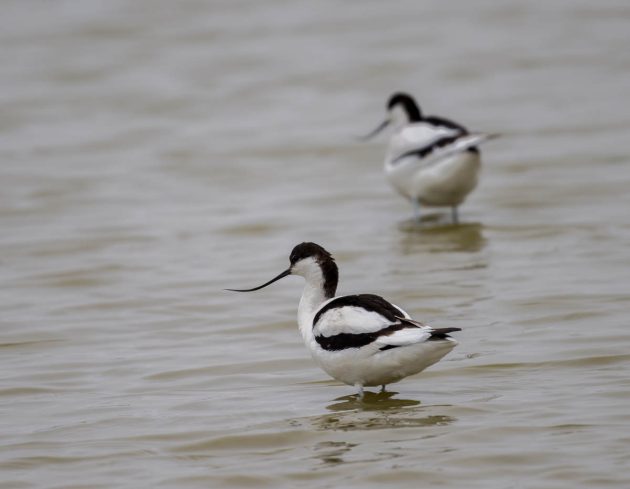
One nice aspect of living and birding in Shanghai is that it is relatively easy to see Reed Parrotbills, an attractive and cute-looking species that apparently at some point switched from bamboo (the preferred habitat of many other parrotbill species) to reed.
The bird is indeed a reed specialist (source), listed as Near Threatened due to the decline in such habitat.
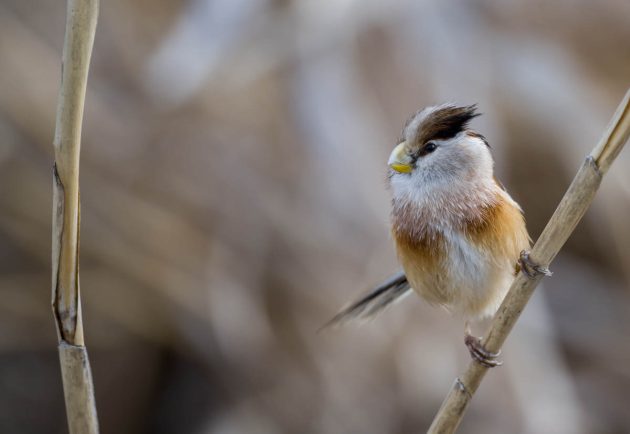
Note the sophisticated hairstyle of the bird in the first photo. They do use quality hairstyle products, these birds.
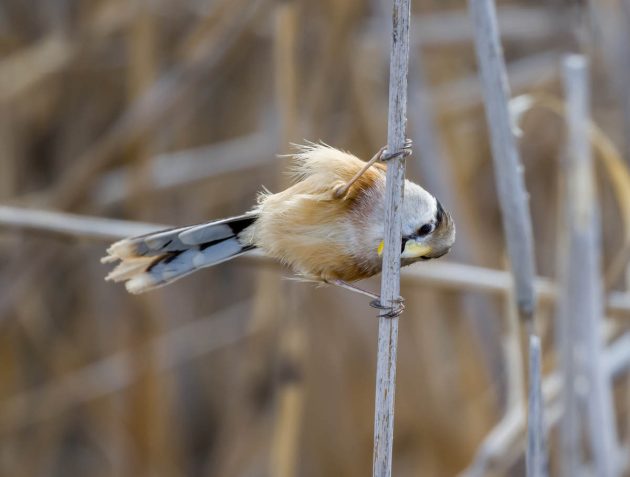
Apart from shrinking habitats, snakes seem to make the life of Reed Parrotbills difficult. In one study, more than two-thirds of nests failed due to predation from snakes. It is thus not surprising that it is rare to hear a Reed Parrotbill speak neutrally about snakes.
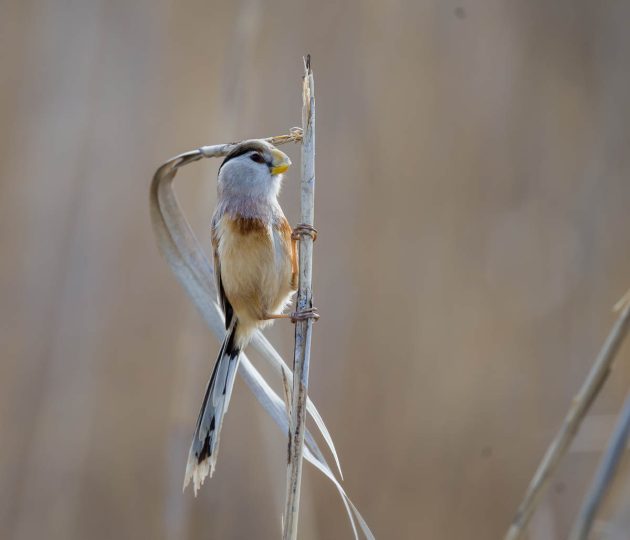
The Latin species name heudei is in honor of Pierre Marie Heude, a French missionary and naturalist who helped open up a natural history museum in Xujiahui (an area in Shanghai nowadays mostly known for shopping centers) and eventually died there (source).
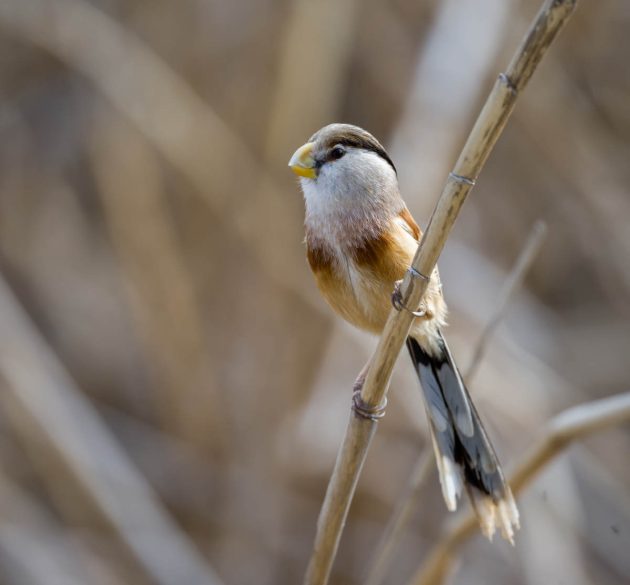
And that’s it for this month.











Leave a Comment